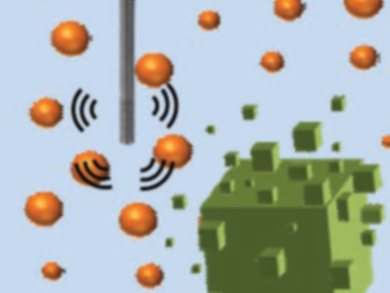Fluorescent probes are an important tool in biomedical imaging and have helped to advance our understanding of many cellular processes. Inorganic fluorescent nanoparticles (NPs) are typically brighter than fluorescent molecules, but suffer from poor biodegradability. On the other hand, organic NPs are an emerging alternative, but need new methods that yield monodisperse and crystalline materials. Only then, the effect of aggregation-induced emission will show its full potential, resulting in NPs with high brightness.
Bin Liu, National University of Singapore and Agency for Science, Technology, and Research (A*STAR), Ben Zhong Tang, Hong Kong University of Science and Technology, China, and South China University of Technology, Guangzhou, Zujin Zhao, South China University of Technology, and colleagues have obtained highly fluorescent and monodisperse organic nanocrystals using a bottom-up method. First, a new molecular fluorophore was synthesized by functionalizing dicyanomethylene-benzopyran with a tetraphenylethylene moiety. Subsequently, crystalline seeds were prepared and injected into an aqueous solution of the fluorophore while ultrasonication provided mechanical stress to break down the particles.
The resulting nanocrystals were successfully used to visualize cells and blood vessels with confocal laser scanning microscopy. The nanocrystals show a 400 % increase in brightness compared to their amorphous counterparts. According to the researchers, this bottom-up method is applicable to other organic molecules that show aggregation-induced emission.
- Nanocrystallization: A Unique Approach to Yield Bright Organic Nanocrystals for Biological Applications,
S. M. Ali Fateminia, Zhiming Wang, Chi Ching Goh, Purnima N. Manghnani, Wenbo Wu, Duo Mao, Lai Guan Ng, Zujin Zhao, Ben Zhong Tang, Bin Liu,
Adv. Mater. 2016.
DOI: 10.1002/adma.201604100




